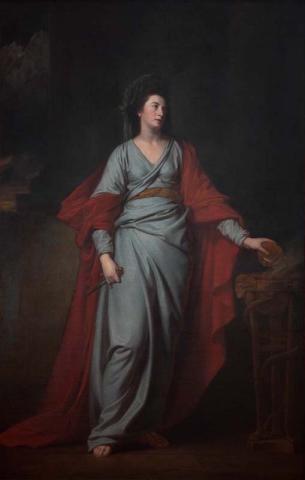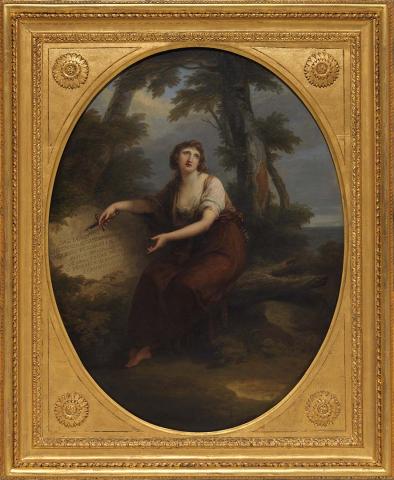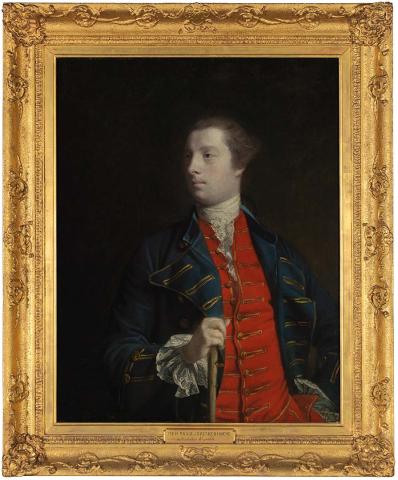ESSAY: 18th-century English portraiture
This group of British paintings points to major artistic and social developments in England during the eighteenth century. Both the production and reception of art works underwent a transformation in this period. While secular subjects had largely replaced the role of religious themes in painting, the classical worlds of Greece and Rome persisted as a source of subject matter and as models for a civilised society. The portraits by Allan Ramsay, George Romney, Angelica Kauffmann and Joshua Reynolds portray their sitters in roles that refer to their status or position in society. Ramsay’s Portrait of William Foster, for instance, directs attention to the sitter as a gentleman accomplished in music, while Romney’s Mrs Yates as the Tragic Muse Melpomene refers to a female figure from Greek mythology believed to inspire works of art and poetry. In 1768,
The Royal Academy was founded in London with Joshua Reynolds as its President. The Academy’s training of artists emphasised classical subjects, portraiture and history painting, and through its annual exhibitions conferred a status on art not previously seen in England. The idea of ‘taste’ and the ‘fine arts’ — such as painting and sculpture — were considered to be distinct from the mechanical arts, and treatises on taste, criticism and aesthetics emerged. Women made increasing contributions to English culture as novelists, musicians, actors and painters, with Angelica Kauffman being one of two women members of the original Academy.
The idea of ‘high culture’ developed, not as previously in the courts and palaces of royalty, but in the coffee houses, reading societies, galleries and concert halls of London. Decorative arts and finely crafted furniture were produced to satisfy a market based in the rapidly growing urban population. Such items were often decorated with motifs derived from neo-classical and French sources.
Connected objects

Portrait of William Foster 1741
- RAMSAY, Allan - Creator
Metadata, copyright and sharing information
About this story
- Subject


